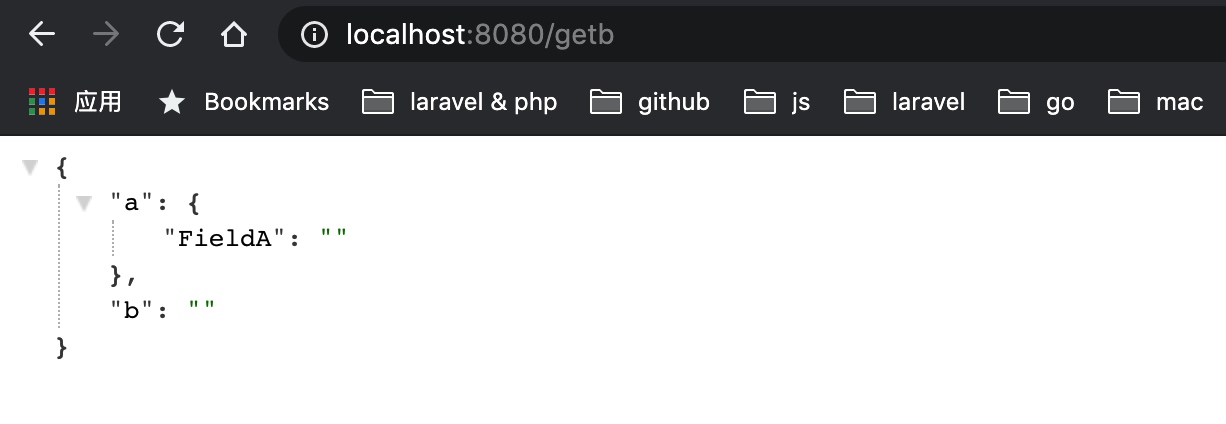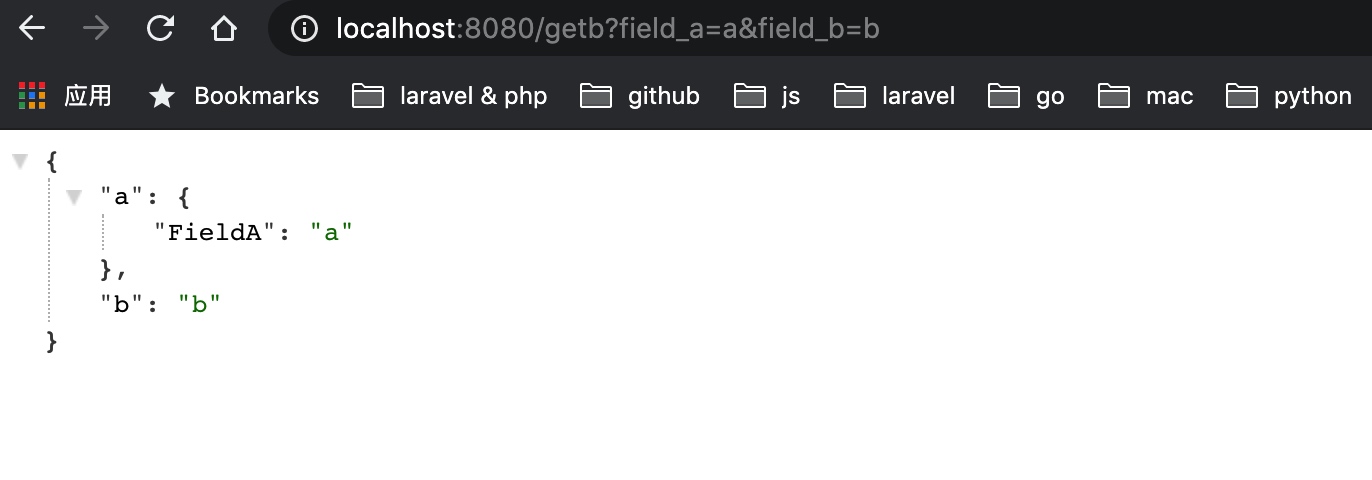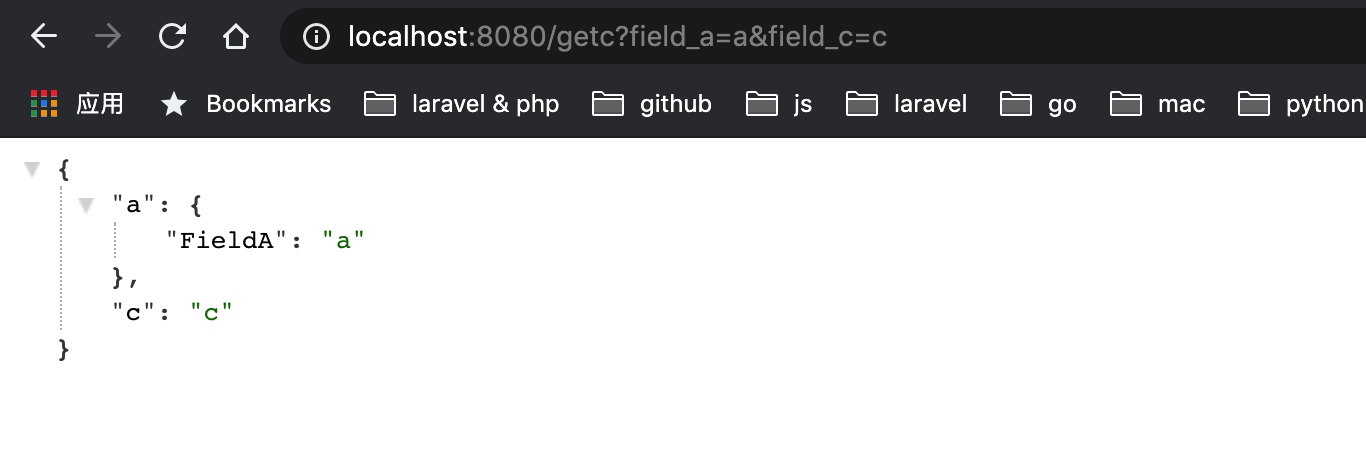Gin 使用示例(二):通过自定义结构体绑定表单请求数据
src/gin-demo/examples/custom_request_struct.go:
package main
import "github.com/gin-gonic/gin"
// 最基本的结构体
type StructA struct {
FieldA string `form:"field_a"`
}
// 嵌套结构体的结构体
type StructB struct {
NestedStruct StructA
FieldB string `form:"field_b"`
}
// 嵌套结构体指针的结构体
type StructC struct {
NestedStructPointer *StructA
FieldC string `form:"field_c"`
}
// 嵌套匿名结构体的结构体
type StructD struct {
NestedAnonyStruct struct {
FieldX string `form:"field_x"`
}
FieldD string `form:"field_d"`
}
// 返回 StructB
func GetDataB(c *gin.Context) {
var b StructB
// 读取请求数据并写入结构体b
c.Bind(&b)
// 返回 JSON 格式响应
c.JSON(200, gin.H{
"a": b.NestedStruct,
"b": b.FieldB,
})
}
// 返回 StructC
func GetDataC(c *gin.Context) {
var b StructC
c.Bind(&b)
c.JSON(200, gin.H{
"a": b.NestedStructPointer,
"c": b.FieldC,
})
}
// 返回 StructD
func GetDataD(c *gin.Context) {
var b StructD
c.Bind(&b)
c.JSON(200, gin.H{
"x": b.NestedAnonyStruct,
"d": b.FieldD,
})
}
func main() {
r := gin.Default()
r.GET("/getb", GetDataB)
r.GET("/getc", GetDataC)
r.GET("/getd", GetDataD)
r.Run()
}
启动服务器:

通过 curl 发起请求:





No Comments